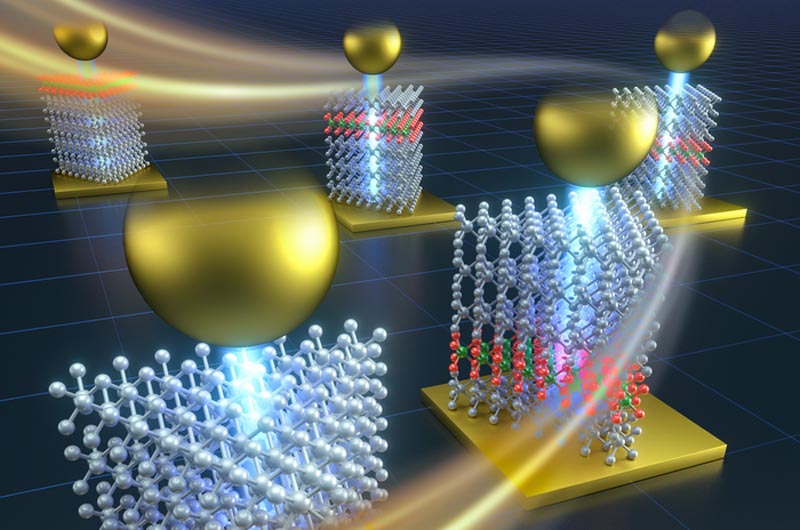
Scientists Create Nano-Ruler to Explore Subnano-Scale Plasmonics

Scientists Fabricate Nano-ruler to Look into Longitudinal Plasmonic Field in A Nanocavity at Subnano-scale
Credit: CHEN Siyu
… to look into longitudinal plasmonic field in a nanocavity at subnano-scale.
In a research work published June 19 in Journal of the American Chemical Society reported an innovative study that a group of scientists who have been engaged in Surface-enhanced Raman spectroscopy (SERS), made a nano-ruler to look deeply into longitudinal plasmonic field in a nanocavity.
SERS is a highly sensitive and powerful spectral analysis technique applicable in various fields. In contrast to weak Raman scattering, SERS realized a dramatically enhanced Raman signal by up to 1010-15 , allowing the analysis of single molecules.
“We have been working on SERS technology for year and been trying to develop it. We all know clearly that how we develop the technology depends, to a large extent, on what we know about the plasmonic field. In experiments, we observed an uneven distribution in plasmonic field at nano-scale. But we lack theoretic and experimental support. So that we decided to figure it out.” YANG Liangbao who leads the team of Hefei Institutes of Physical Science, CAS explained why he and his coworkers conducted this research.
“Powerful tool was needed.” When recapped on the very beginning of the study, YANG and his team had to find some way to plasmonic field exploration. “We designed and fabricated the nanoruler to look into it in high spatial resolution,” added YANG.
YANG and his coworkers started their design.
They built a unique nanoruler with a ~7*10-10m spatial resolution that was actually a plasmonic nanocavity fabricated through combining ultrasmooth gold films and single gold nanoparticles.
As for their fabrication, a special and innovative structure was designed as spacer layer that was five layers of two-dimensional atomic crystal among which the researchers inserted a monolayer, WS2 as a SERS probe and the other four layers of MoS2 as reference layers.
This specialized design generated a quantitative SERS intensity strong enough to enable the quantitative and direct detection of longitudinal plasmonic field distribution.
Beside the fabrication and direct experiment, the team also resorted to theoretical derivation, calculations, and spectroscopic measurements to supplement and verify their study. All the research they have done just surprised them that longitudinal plasmonic field in an individual nanocavity was heterogeneously distributed with an unexpectedly large intensity gradient.
“We are all excited,” YANG expressed how excited he and his team were to offer a way of insight into plasmonic field in a nanocavity and, they thought, their work cast new light on understanding of plasmonics and SERS technology.
Journal: Journal of the American Chemical Society
DOI: 10.1021/jacs.2c03081
Media Contact
Weiwei Zhao
Hefei Institutes of Physical Science, Chinese Academy of Sciences
annyzhao@ipp.ac.cn
Office: 86-551-655-91206
Original Source
https://english.hf.cas.cn/nr/bth/202206/t20220621_306742.html














